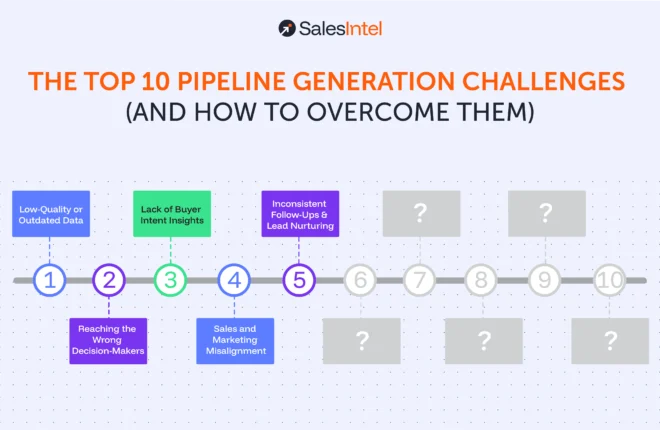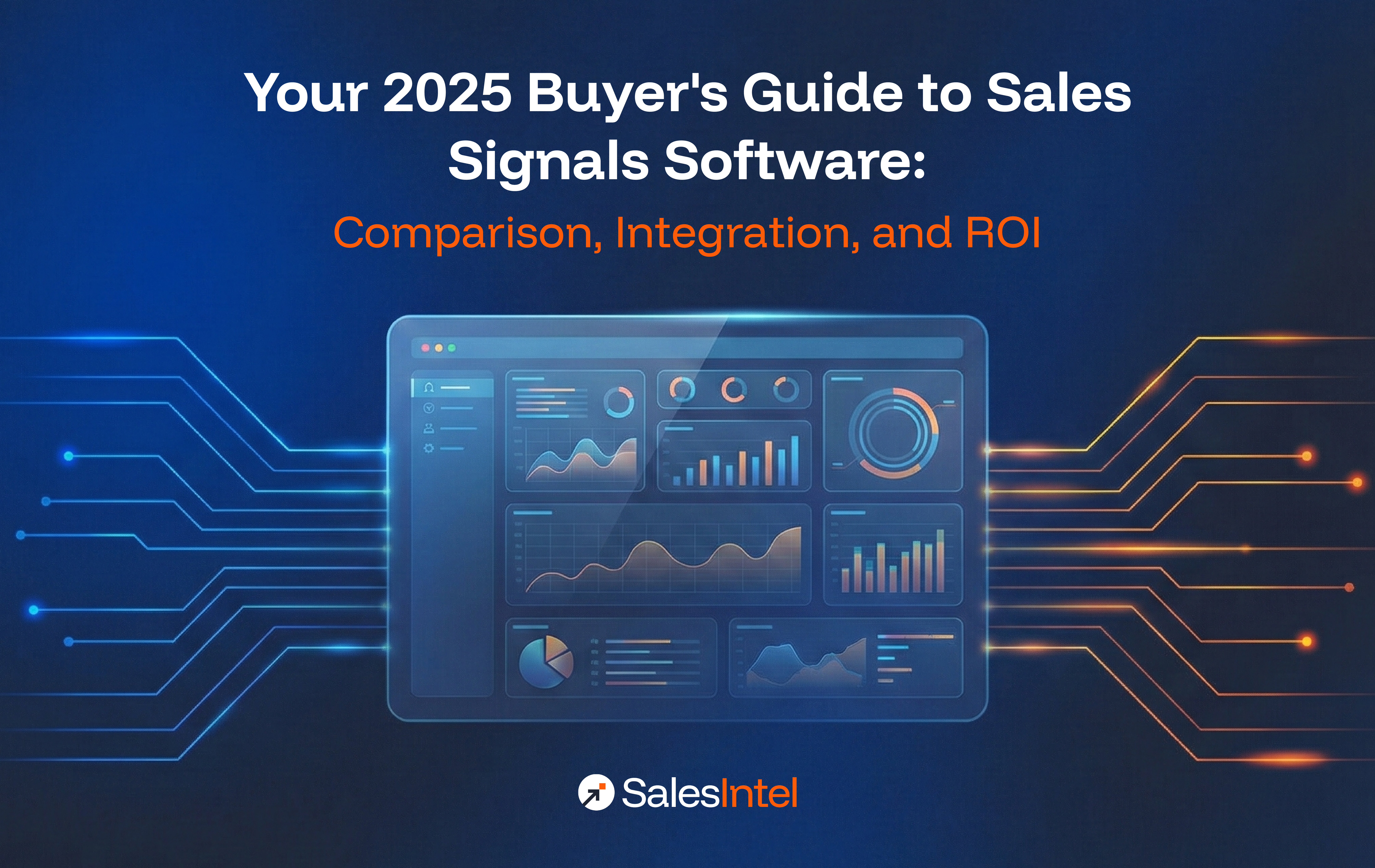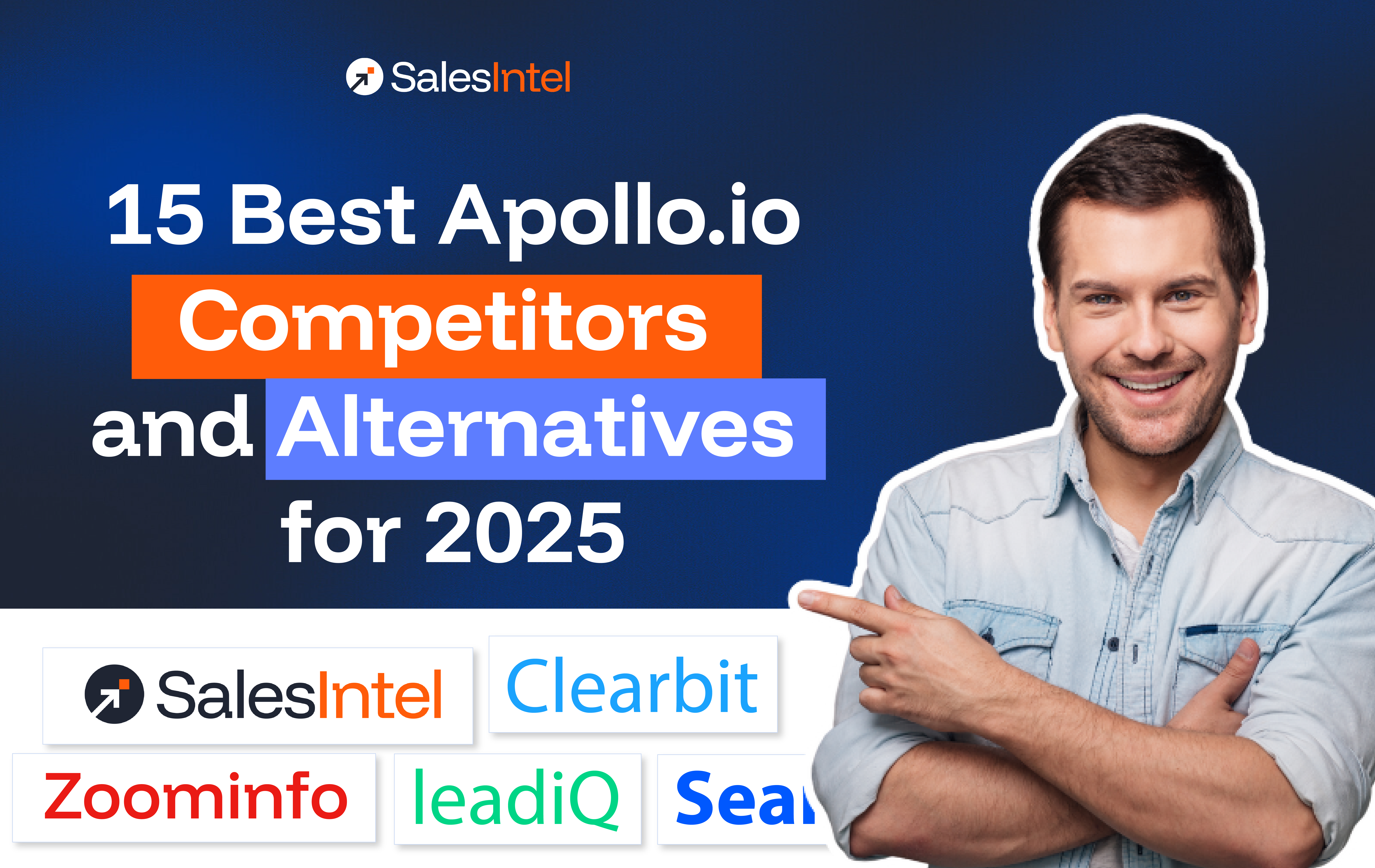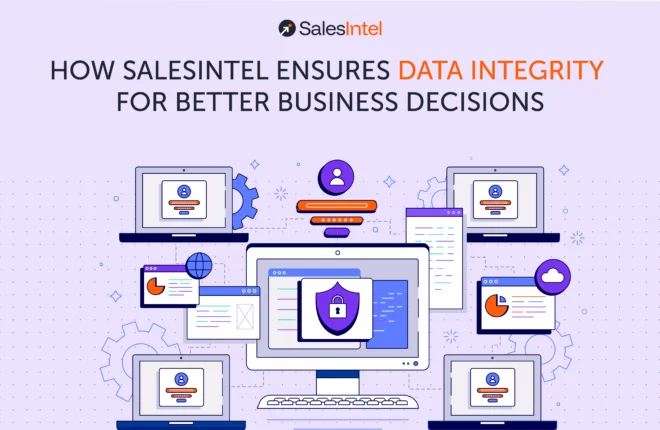Every sales team understands that a full pipeline is the foundation of revenue growth. Without a steady flow of high-quality leads, hitting sales targets feels like an uphill battle.
But here’s the frustrating reality: generating and maintaining a strong pipeline is far from easy. Sales teams often face a mix of outdated data, poor targeting, and inefficient lead management. All of which slow down momentum.
And the worst part? Most of these challenges don’t become obvious until deals start slipping through the cracks.
That’s why we’re breaking down the biggest pipeline generation roadblocks and, more importantly, the practical solutions to overcome them.
The Top 10 Pipeline Generation Challenges (and How to Solve Them)
Challenge #1: Low-Quality or Outdated Data
Data is the foundation of every sales pipeline. But what happens when that foundation is cracked?
The problem is simple: contact data decays at an alarming rate. Studies show that 30% of B2B data becomes outdated every year due to job changes, company moves, and rebrands. (Source: Gartner)
When sales teams rely on outdated or inaccurate data, they face:
- High bounce rates from emails sent to invalid addresses.
- Wasted outreach efforts on prospects who are no longer in their roles.
- Reduced engagement because messages don’t reach the right people.
Solution: To avoid this, businesses must invest in real-time, verified data sources and regularly refresh their databases. Sales intelligence tools that provide human-verified contact information can significantly improve data accuracy, ensuring that every outreach attempt reaches a valid and relevant prospect.
Challenge #2: Reaching the Wrong Decision-Makers
Imagine crafting the perfect pitch only to deliver it to someone who has no authority to make a decision.
Many sales campaigns fail because they target the wrong job titles or industries. The lack of detailed firmographic and technographic insights leads to generic targeting, reducing engagement and conversion rates.
Why does this happen?
- Sales teams rely on broad filters without considering key buying signals.
- They lack insight into a company’s technology stack, budget, or key pain points.
Solution:
- Build Ideal Customer Profiles (ICPs) using firmographic data such as company size, industry, and revenue.
- Leverage technographics to understand what software or tools a company already uses and whether they’re a good fit for your solution.
- Use intent data to identify prospects actively searching for solutions like yours, ensuring outreach efforts are focused on high-potential accounts.
Challenge #3: Lack of Buyer Intent Insights
Not all leads are created equal. Some are ready to buy, while others are just browsing. Treating all leads the same way is a recipe for wasted effort.
Without intent data, sales teams struggle to:
- Differentiate between prospects who are actively researching and those who aren’t.
- Prioritize high-intent accounts that are closer to making a purchase decision.
Solution: Implement intent data tracking to identify companies showing buying signals—such as searching for industry-related keywords, engaging with competitors, or consuming high-value content. Prioritizing outreach to these prospects increases the chances of conversion while reducing wasted sales effort.
Challenge #4: Sales and Marketing Misalignment
Marketing generates leads, but sales often dismiss them as unqualified. Sound familiar?
The disconnect between sales and marketing teams is one of the biggest pipeline generation challenges. While marketing focuses on lead volume, sales prioritizes lead quality. The result? Finger-pointing and missed revenue opportunities.
Why does this happen?
- No shared definitions of what makes a lead “qualified” (MQL vs. SQL confusion).
- Different goals marketing measures success by leads generated, while sales measures it by deals closed.
Solution:
- Align both teams on a common ICP and lead qualification criteria to ensure leads meet sales expectations.
- Adopt an Account-Based Marketing (ABM) approach, where marketing supports targeted outreach to high-value accounts.
- Use shared dashboards and real-time visibility tools to track lead progress and refine strategies collaboratively.
Challenge #5: Inconsistent Follow-Ups & Lead Nurturing
Sales is a marathon, not a sprint but many reps quit too soon.
Research shows that 44% of sales reps give up after just one follow-up, yet most deals require at least five or more touches. (Source: InsideSales)
What happens when follow-ups are inconsistent?
- Leads get lost in CRM systems.
- Potential customers forget about your solution.
- Competitors swoop in and win the deal.
Solution:
- Use automated email sequences to stay on prospects’ radar without overwhelming them.
- Personalize follow-ups based on past interactions, such as engagement with emails, case studies, or webinars.
- Align lead nurturing efforts with the buyer’s journey, ensuring the right content is delivered at the right time.
Challenge #6: Over-Reliance on Inbound Leads
Inbound leads are great when they come. The problem? They’re passive.
If your team is only waiting for prospects to fill out forms or download whitepapers, you’re missing out on proactive pipeline-building opportunities.
Risks of relying solely on inbound leads:
- Lead flow becomes unpredictable.
- Competitors may engage high-value accounts before you do.
Solution:
- Balance inbound and outbound strategies. Instead of waiting, actively reach out to ideal customers using cold emails, LinkedIn, and targeted ABM campaigns.
- Use data-driven prospecting to identify high-intent accounts before they even consider your competitors.
Challenge #7: Too Much Focus on Quantity Over Quality
A massive pipeline looks good on paper, but if the leads are unqualified, it’s just noise.
Many sales teams fall into the trap of prioritizing quantity over quality, leading to:
- Time wasted chasing unqualified leads.
- Poor conversion rates and lower ROI.
Solution:
- Implement lead scoring to prioritize high-value prospects based on engagement, intent signals, and fit.
- Use predictive analytics to refine targeting and improve conversion rates.
- Shift from volume-based KPIs (e.g., number of emails sent) to quality-focused metrics (e.g., meetings booked, deals closed).
Challenge #8: Poor Personalization in Outreach
Generic emails won’t cut it. Buyers expect tailored communication.
80% of decision-makers ignore cold outreach if it lacks relevance. (Source: Forrester)
Solution:
- Use intent and behavioral data to craft hyper-personalized messages.
- Reference industry trends, competitor comparisons, or mutual connections in outreach.
- Use multi-channel engagement (email, LinkedIn, video) to increase response rates.
Challenge #9: Long Sales Cycles That Stall
B2B deals take time, but they don’t have to take forever.
Why do sales cycles stall?
- Decision-makers get distracted or deprioritize the purchase.
- No clear urgency is created.
Solution:
- Use intent data to engage buyers when interest is highest.
- Provide ROI calculators and case studies to justify investment.
- Engage multiple stakeholders early to avoid bottlenecks later.
Challenge #10: Difficulty Tracking ROI on Pipeline Generation Efforts
If you don’t know where your best leads come from, you’re flying blind.
Without proper attribution, businesses waste money on ineffective campaigns.
Solution:
- Use multi-touch attribution models to track which channels contribute to closed deals.
- Invest in sales intelligence platforms that connect lead data to revenue outcomes.
- Continuously refine strategies based on real conversion data.
From Pipeline Chaos to Predictable Revenue: Overcoming Common Sales Roadblocks
Pipeline generation is tough, but it doesn’t have to be a constant struggle. Sales teams often find themselves stuck chasing the wrong leads, losing deals to stalled cycles, and struggling to track what’s actually driving revenue. But these challenges are not roadblocks; they are opportunities for optimization.
By tackling these 10 common pitfalls, sales teams can shift from reactive selling to proactive pipeline management. Prioritizing quality over quantity, leveraging intent data for personalization, and streamlining the sales cycle will turn pipeline uncertainty into predictable revenue growth.
Most importantly, sales success isn’t about working harder, it’s about working smarter. When sales and marketing teams align their efforts, track ROI effectively, and engage the right prospects at the right time, pipeline generation becomes a competitive advantage rather than a challenge.
It’s time to stop spinning your wheels and start building a pipeline that converts.
FAQs
Shared quotas can blur accountability and reduce motivation, leading to uneven effort and weaker pipeline activity. Clear individual targets supported by transparent performance data help maintain ownership and balanced productivity across the team.
How do low-performing sales representatives impact pipeline generation, and what are solutions?
Low performers reduce prospecting activity and slow pipeline momentum. Data-backed coaching, targeted territories, and access to accurate contact data can help them focus on high-potential accounts and improve results.
Why is a lack of buyer intent insights a challenge in pipeline generation?
Without buyer intent data, teams waste time on uninterested prospects. Intent insights help identify in-market accounts early, prioritize outreach, and improve conversion efficiency.
What are the main challenges in generating a sales pipeline?
Key challenges include poor data quality, weak lead prioritization, limited visibility into buyer intent, and disconnected tools. Solving these requires verified data, integrated systems, and better alignment between sales and marketing.
What challenges does low-quality or outdated data pose for pipeline generation?
Inaccurate data leads to missed contacts, wasted outreach, and flawed forecasts. Regular data verification and enrichment ensure teams engage the right prospects with confidence.
How does sales and marketing misalignment impact pipeline generation?
When sales and marketing aren’t aligned, lead quality suffers and follow-up becomes inconsistent. Shared data, unified metrics, and coordinated targeting help both teams build a stronger pipeline together.
Why is it difficult to track ROI for pipeline generation efforts?
ROI tracking is challenging when data lives in separate systems or lacks proper attribution. Centralized, verified insights connect activities to revenue and clarify what’s truly driving pipeline growth.
Are traditional methods like cold calls and ads effective for B2B pipeline generation, or are other channels more successful?
Cold calls and ads can still work, but only when guided by verified data and buyer intent insights. Blending traditional outreach with data-driven targeting delivers far stronger results.




